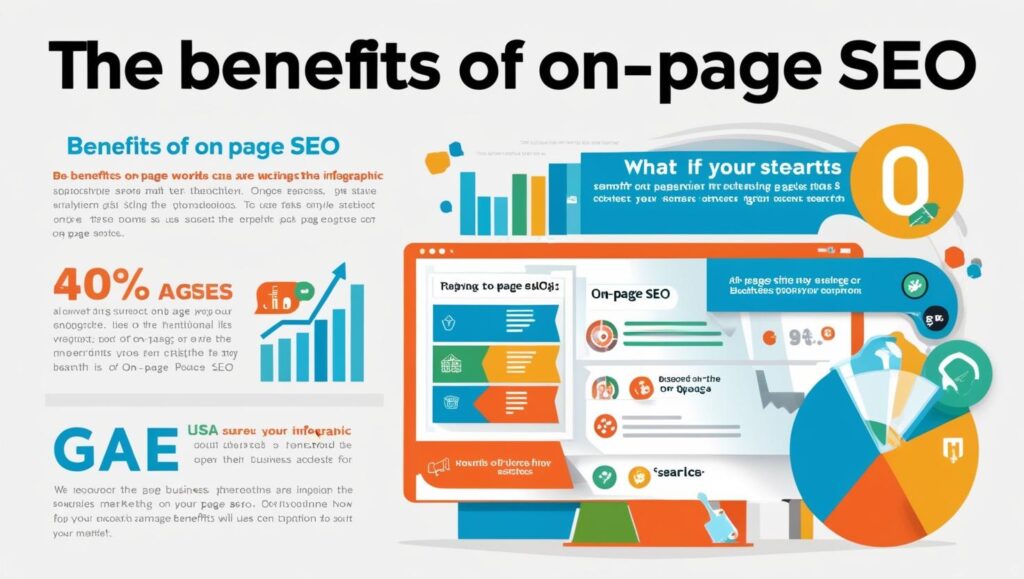
Mastering On-Page SEO: The Ultimate Guide to Higher Rankings

Mastering On-Page SEO: The Ultimate Guide to Higher Rankings
optimisingIn the ever-evolving digital landscape, On-Page SEO remains one of the most crucial factors in achieving higher search engine rankings. Whether you’re a business owner, a digital marketer, or an affiliate marketer, optimizing your website’s on-page elements is essential for driving organic traffic. This guide will walk you through the fundamentals of On-Page SEO, best practices, and expert tips to boost your search engine visibility.
What is On-Page SEO?
On-Page SEO refers to the optimization of individual web pages to improve their ranking on search engines like Google. Unlike Off-Page SEO (which focuses on external factors like backlinks), On-Page SEO involves optimizing content, HTML elements, and website structure to enhance relevance and user experience.
Key Elements of On-Page SEO
To effectively optimize your pages, focus on these core elements:

1. Keyword Research & Optimization
- Identify high-value keywords with good search volume and low competition.
- Use long-tail keywords to target specific user queries.
- Place primary keywords in title tags, headings, URLs, and meta descriptions.
- Avoid keyword stuffing—use keywords naturally within content.
2. Title Tags & Meta Descriptions
- Title Tags: Keep them under 60 characters, include the main keyword, and make them compelling.
- Meta Descriptions: Limit to 160 characters, summarize the page content, and use a call to action.
3. URL Structure
- Use short, descriptive URLs with target keywords (e.g.,
example.com/on-page-seo-guide). - Avoid special characters, unnecessary numbers, and lengthy URLs.
4. High-Quality Content
- Write engaging, informative, and original content that provides value.
- Use structured formatting: headings (H1, H2, H3), bullet points, and short paragraphs.
- Add internal links to related content on your site.
- Include external links to authoritative sources where necessary.
5. Image Optimization
- Use descriptive file names (e.g.,
on-page-seo-checklist.jpginstead ofIMG12345.jpg). - Add alt text for accessibility and keyword relevance.
- Compress images to improve page load speed.
6. Internal Linking
- Link to related articles or pages to improve navigation and distribute link equity.
- Use descriptive anchor text instead of generic terms like “click here.”
7. Mobile-Friendliness & User Experience
- Ensure your site is responsive and adapts to different screen sizes.
- Optimize for fast loading speeds by compressing images and minifying code.
- Use clear navigation and a clean layout to enhance user experience.
8. Schema Markup (Structured Data)
- Implement schema markup to help search engines understand your content better.
- Add rich snippets for better visibility in search results (e.g., ratings, FAQs, events).
9. Page Speed Optimization
- Reduce server response times and leverage browser caching.
- Optimize CSS, JavaScript, and HTML to improve loading speed.
- Use CDN (Content Delivery Network) for faster content delivery.
Best Practices for On-Page SEO Success
- Write for humans first, search engines second – Prioritize readability and user intent.
- Update old content regularly – Keep information fresh and relevant.
- Monitor performance – Use tools like Google Search Console, Google Analytics, and SEMrush to track SEO progress.
- Test and adapt – SEO is dynamic; stay updated with Google algorithm changes.
Final Thoughts
On-Page SEO is a fundamental part of digital marketing that directly impacts your website’s rankings and user experience. By following these best practices, you can optimize your web pages for higher visibility and better engagement. Start implementing these techniques today and watch your search rankings improve!

Boost your website’s rankings with this comprehensive guide on On-Page & Off-Page SEO. Learn essential strategies, keyword SEO made easy learing step by step link building, and expert tips to improve search engine visibility. 🚀
